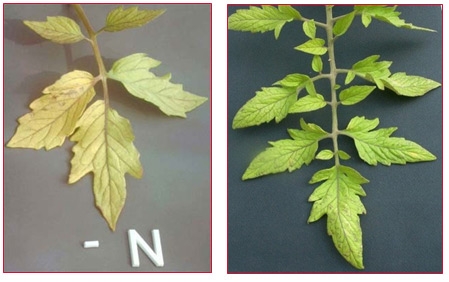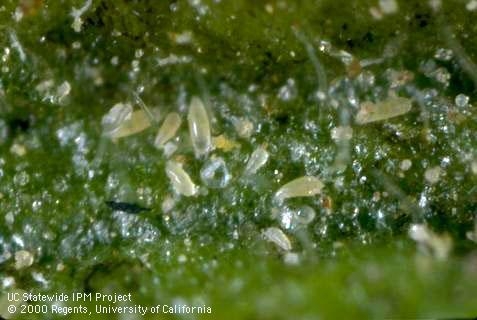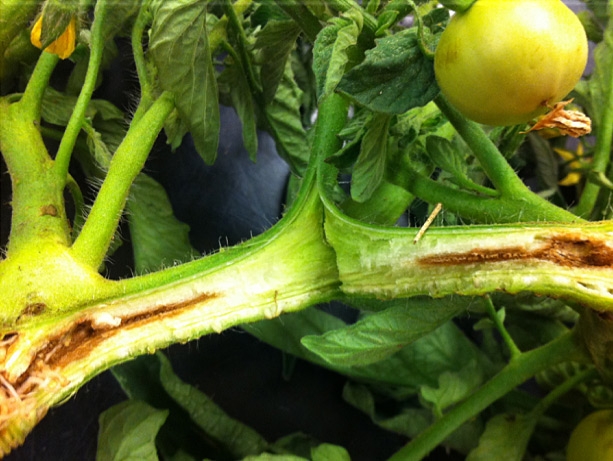Advice from the Help Desk of the
UC Master Gardener Program of Contra Costa County
Subject: More Summer Tomato problems as well as Crop Rotation and Fertilization
Client brought tomatoes from her garden with “production problems” to the Help Desk.
Response from the Help Desk: Thank you for bringing your tomato plant samples to the UC Master Gardener Program Help Desk office. You mentioned that you have been planting tomatoes in the same area for a number of years and have not had problems before this year. We found 3 different conditions in your samples that could explain why your plants are not thriving.

pix: HaifaGroup

pix: UCANR
place year after year can favor a build up of this pest. The pest can also persist in petunias, morning glory, and other plants in the tomato family like potato, peppers and eggplant. We recommend that you remove the infested plants, all fallen leaves and weeds in the area, and put them in your green waste container (not in a compost pile). This will reduce the potential that russet mites will still be in your yard next year.
Additional information on the russet mites can be found here http://ipm.ucanr.edu/PMG/GARDEN/VEGES/PESTS/tomrusmite.html.
Sulfur dusts can be used to reduce an infestation of russet mites but will not help if the pest has already killed most of the plant. If you do decide to try a treatment anyway, safety warnings applicable to the use of sulfur include wearing eye protection, long pants and long sleeves, and a hat, and avoiding contact with eyes and skin. Additional information on sulfur is here http://ipm.ucanr.edu/TOOLS/PNAI/pnaishow.php?id=67 .

pix: Ohio Stat Univ
Finally, we strongly recommend that you not plant tomatoes or other plants in the tomato family listed above in the same area more than 2 years in a row. Rotating your vegetables will help reduce the pests and diseases that you have been experiencing this year. You may also be interested in a good overall UC reference on growing tomatoes in the home garden that can be found (free) at http://ucce.ucdavis.edu/files/repositoryfiles/8159-54222.pdf
Please feel free to contact us again if you have additional problems with your garden.
Help Desk of the UC Master Gardener Program of Contra Costa County (JL)
Note: The UC Master Gardeners Program of Contra Costa's Help Desk is available year-round to answer your gardening questions. Except for a few holidays, we're open every week, Monday through Thursday for walk-ins from 9:00 am to Noon at 75 Santa Barbara Road, 2d Floor, Pleasant Hill, CA 94523. We can also be reached via telephone: (925) 646-6586, email: ccmg@ucanr.edu, or on the web at http://ccmg.ucanr.edu/Ask_Us/ MGCC Blogs can be found at http://ccmg.ucanr.edu/HortCoCo/ You can also subscribe to the Blog (//ucanr.edu/blogs/CCMGBlog/).